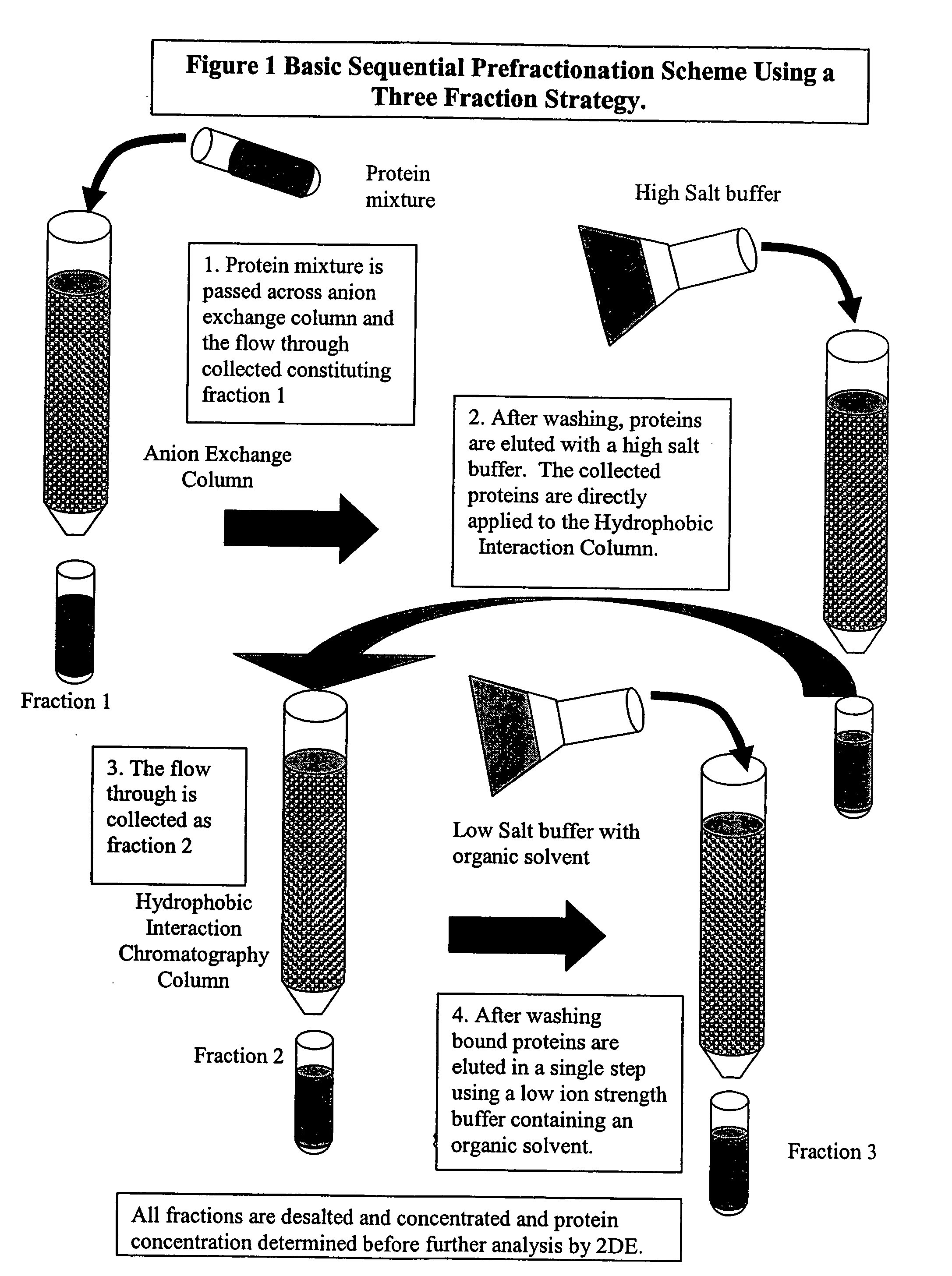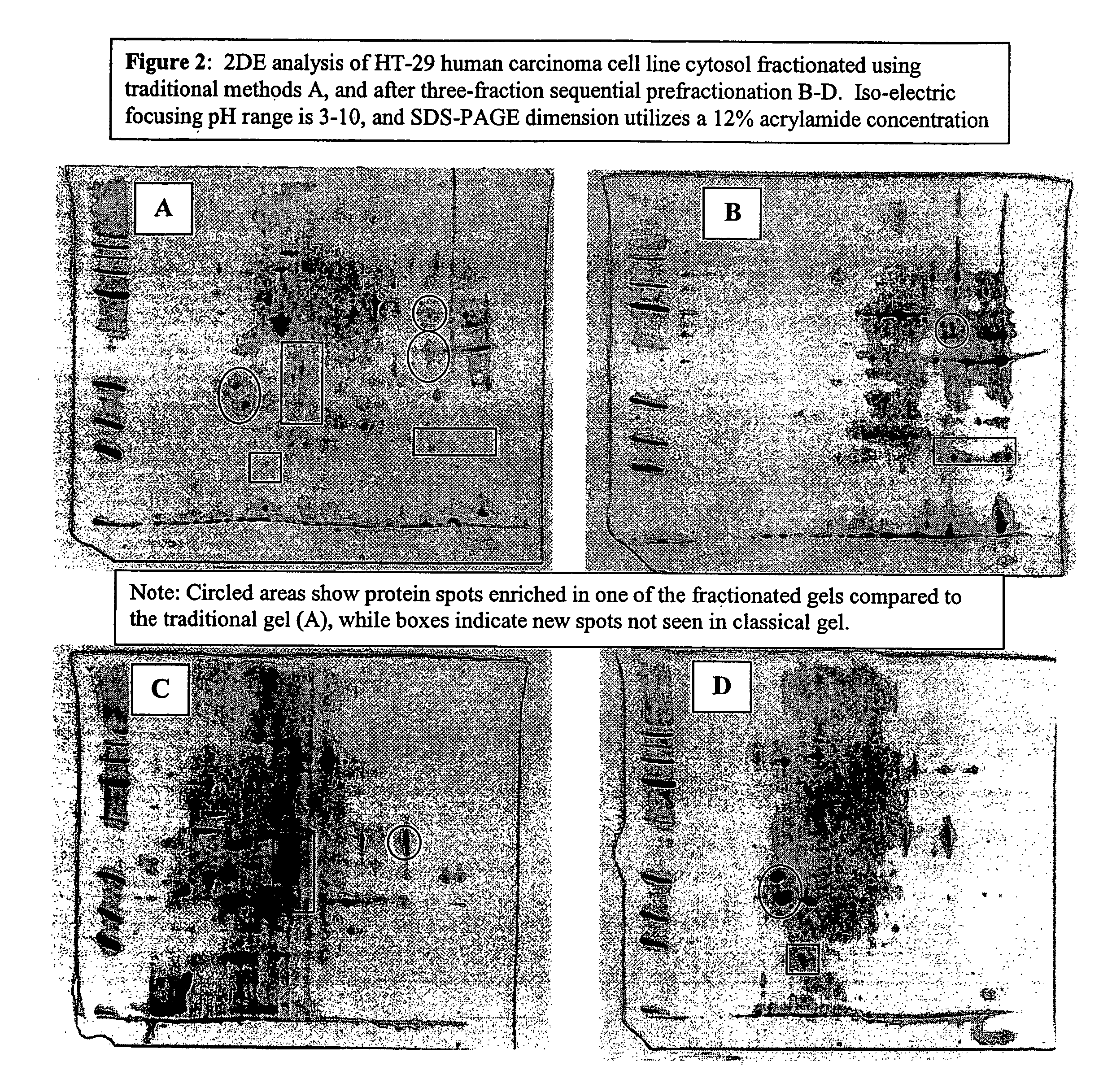Procedure for the fractionation of proteins by using sequential ion exchange and hydrophobic interaction chromatography as prefractionation steps before analysis by two dimensional electrophoresis
- Summary
- Abstract
- Description
- Claims
- Application Information
AI Technical Summary
Benefits of technology
Problems solved by technology
Method used
Image
Examples
example 1
[0024] Four T-75 flasks of HT-29 carcinoma cell cultures were grown until confluent in McCoy's modified medium (Gibco) with 10% FBS, and 1% Penicillin-Streptomycin (Gibco). Media was removed and cultures were rinsed two times with PBS, then lysed with a low ionic strength lysis buffer ((50 mM Tris, pH 7.5, 10 mM DTT, and a protease Inhibitor cocktail (Sigma diluted 100:1), followed by 3 rapid freeze / thaw cycles. Individual lyses were pooled and centrifuged for 20 minutes at 24,000×G at four degrees Celsius, followed by filtering with a 0.2 μm syringe filter. Total protein was determined by Bradford's dye binding assay. An aliquot was diluted 5:1 in 2DE lysis buffer (7 M urea, 2 M thiourea, 4% CHAPS, 4 mM tributyl phosphine (TBP), 0.5% ampholyte solution, and a trace of bromophenol blue) and analyzed by 2DE and is designated the traditional method.
[0025] Three milligrams of the cytosolic extract was applied to an ion exchange column (Poly-Prep gravity column (Biorad) containing 1 ml...
PUM
| Property | Measurement | Unit |
|---|---|---|
| Percent by mass | aaaaa | aaaaa |
| Fraction | aaaaa | aaaaa |
| Molar density | aaaaa | aaaaa |
Abstract
Description
Claims
Application Information
 Login to View More
Login to View More - R&D
- Intellectual Property
- Life Sciences
- Materials
- Tech Scout
- Unparalleled Data Quality
- Higher Quality Content
- 60% Fewer Hallucinations
Browse by: Latest US Patents, China's latest patents, Technical Efficacy Thesaurus, Application Domain, Technology Topic, Popular Technical Reports.
© 2025 PatSnap. All rights reserved.Legal|Privacy policy|Modern Slavery Act Transparency Statement|Sitemap|About US| Contact US: help@patsnap.com


